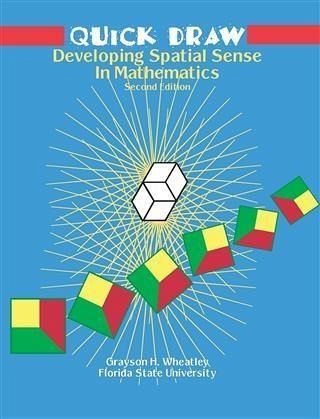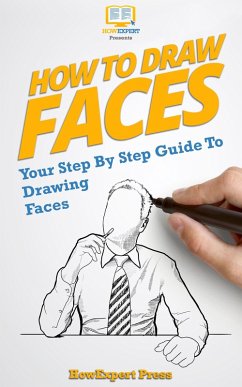
Quick Draw (eBook, ePUB)
Developing Spatial Sense in Mathematics

PAYBACK Punkte
7 °P sammeln!
Just as it is useful to have a mental map of the streets to plan the best route in traveling across town, it is useful to have mental images of mathematical patterns and relationships. If a student has constructed a network of imaged based mathematical meanings, then solutions to problems can be more easily devised. If a person only knows one way and the task is not straight forward, solving the problem may not be possible. In doing mathematics, it is beneficial to recognize that there is more than one way to solve a problem or complete a routine task. It is also important to believe that you ...
Just as it is useful to have a mental map of the streets to plan the best route in traveling across town, it is useful to have mental images of mathematical patterns and relationships. If a student has constructed a network of imaged based mathematical meanings, then solutions to problems can be more easily devised. If a person only knows one way and the task is not straight forward, solving the problem may not be possible. In doing mathematics, it is beneficial to recognize that there is more than one way to solve a problem or complete a routine task. It is also important to believe that you can solve the problem.
Spatial sense is essential for all aspects of mathematics. When a student sees the word 'hexagon' it is important that an image of a hexagon is formed in the brain. When a student sees a set of four dots, it is important that an image of this display is registered and evokes the word 'four' rather that triggered the rote response of counting by ones. When a student is asked to find the perimeter of a rectangle, it is important that they image a rectangle and think of the distance around rather the plugging numbers into some formula. When an algebra student sees the equation y = x2, it is important that an image of the graph of this equation is formed rather then seeing it as just a collection of symbols to be manipulated. Mathematics is about patterns and relationships and these involve mental images.
Quick Draw is designed to develop powerful mental imagery that will come in to play in both numerical and geometric settings and to encourage students to explore alternative ways to solve a problem. When a figure is shown, a Variety of interpretations are possible and learning that other persons see it differently can be liberating. The is student can come to believe there is not just one way to solve a problem but that there are many ways of doing a mathematics task. Students who hold such a belief will be more likely to explore alternatives and act meaningfully than a student who believes there is just one way to do the task. The latter belief can be quite debilitating . As students are engaged in doing mathematics, they are likely to fear forgetting THE way to do the task and develop a levee of anxiety while a student who realizes there are many ways to approach the task can be more confident, realizing that can devise their own path. Thus one of the goals of Quick Draw is to help students form the belief that problems can be solve in many ways and they have the capacity to construct their own way which makes sense to them
Spatial sense is essential for all aspects of mathematics. When a student sees the word 'hexagon' it is important that an image of a hexagon is formed in the brain. When a student sees a set of four dots, it is important that an image of this display is registered and evokes the word 'four' rather that triggered the rote response of counting by ones. When a student is asked to find the perimeter of a rectangle, it is important that they image a rectangle and think of the distance around rather the plugging numbers into some formula. When an algebra student sees the equation y = x2, it is important that an image of the graph of this equation is formed rather then seeing it as just a collection of symbols to be manipulated. Mathematics is about patterns and relationships and these involve mental images.
Quick Draw is designed to develop powerful mental imagery that will come in to play in both numerical and geometric settings and to encourage students to explore alternative ways to solve a problem. When a figure is shown, a Variety of interpretations are possible and learning that other persons see it differently can be liberating. The is student can come to believe there is not just one way to solve a problem but that there are many ways of doing a mathematics task. Students who hold such a belief will be more likely to explore alternatives and act meaningfully than a student who believes there is just one way to do the task. The latter belief can be quite debilitating . As students are engaged in doing mathematics, they are likely to fear forgetting THE way to do the task and develop a levee of anxiety while a student who realizes there are many ways to approach the task can be more confident, realizing that can devise their own path. Thus one of the goals of Quick Draw is to help students form the belief that problems can be solve in many ways and they have the capacity to construct their own way which makes sense to them
Dieser Download kann aus rechtlichen Gründen nur mit Rechnungsadresse in A, B, BG, CY, CZ, D, DK, EW, E, FIN, F, GR, HR, H, IRL, I, LT, L, LR, M, NL, PL, P, R, S, SLO, SK ausgeliefert werden.













